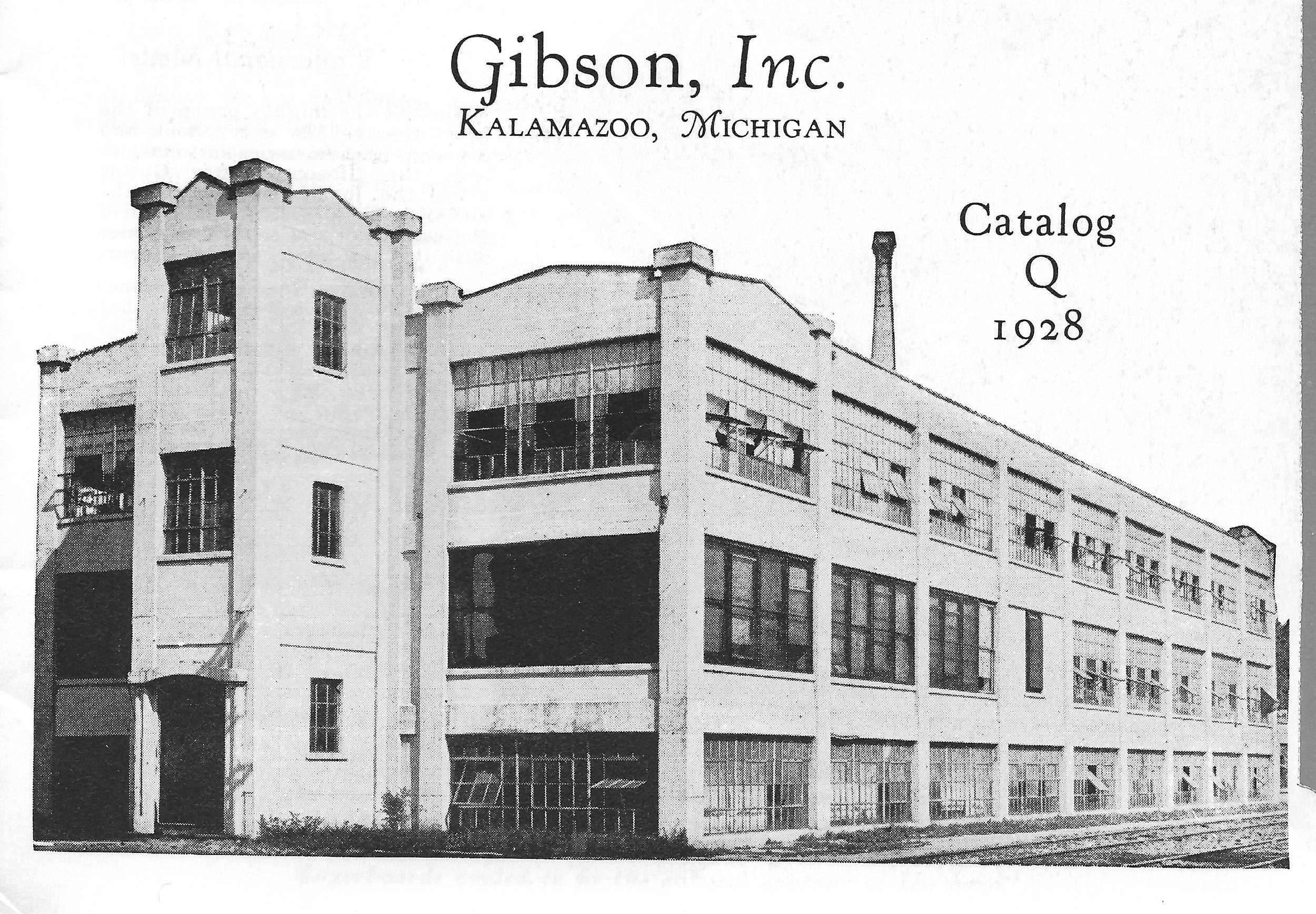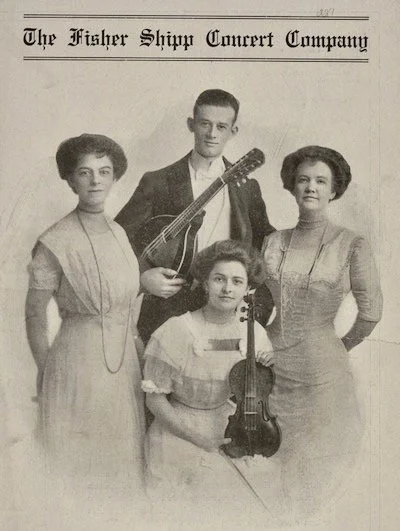On a March morning, Lloyd Loar rises in the modest room he is renting on 216 S Park Street in Kalamazoo, Michigan. His wife, Sallie Fisher Shipp is staying with her mother in Linn, Missouri, helping with family after the death of her father.
Dressed in jacket and tie, Lloyd Loar leaves his room and walks briskly for 20 minutes, winding along South Rose and North Burdick St, finally turning onto Parsons Street. He arrives at the Gibson Mandolin and Guitar factory at 225 Parsons Street where he is employed as Acoustical Engineer. Upon entering, he would have been greeted, perhaps by receptionist and mandocellist with the Gibson Melody Maids, Lucille Campbell. “Good Morning, Master Loar.” “Good morning Lucille.” He makes his way to his office, “Research and Development.” His project? The development of a new mandolin family of instruments. There, he dons a shop apron and focuses entirely on a workbench laden with musical instruments in progress, tools, parts, and draft paper. Mid-morning, he may have visited a team of craftsmen devoted to the new project. Of great interest is the workbench of employees such as Adrian Glerum, who are tap-tuning select pieces of Adirondack spruce for the new mandolins. They would discuss the thickness of the soundboard and placement of the tone bars. In another section of the workplace, Loar would check in with Ted McHugh, for whom he has witnessed patents of key innovations that will help make their vision come alive. On his way back to his office, he stops by to discuss schematics and design drawings with Francis Havens, mandolinist with The Gibson Plectral Sextet, who had worked as draftsman for Kalamazoo Railroad Company before coming to Gibson.
The Gibson Mandolin and Guitar factory, 225 Parsons Street, Kalamazoo, Michigan.
When the whistle blows for lunch, Loar and Havens might well take a moment to examine the latest artist style F-4 Mandolin and H-4 Mandola, freshly strung up in the room where visiting artists could stop by to try out instruments. How could they resist an impromptu duet? Perhaps they would blend the voices of those instruments on some of Loar’s own arrangements. Hearing the music, James M. Johnstone would be tempted to come by and pick up a matching K-4 Mandocello to make it a trio. Longtime Gibson employee and multi-instrumentalist Johnstone is not only the leader of The Gibson Plectral Sextet, but a mainstay of “The Gibsonians,” a fretted-instrument ensemble that toured the US during the 1920 and 1921 seasons with a duel purpose: to perform in concert and promote the latest Gibson instruments.
One of numerous accounts of employees and visiting artists trying out instruments at Gibson (Cadenza, Nov. 1921)
After lunch, Lloyd Loar must turn his attention to correspondence. In the office he would be able to dictate to one of the secretaries, possibly Doris Fraker, another Melody Maid. He writes James L. Loar of Bloomington, Illinois, the superintendent of the “Loar Chautauqua.,” to suggest additional venues. The two cousins had been collaborating on booking the concert tour for the summer of 1922 and notices had already appeared in newspapers and magazines across the mid-west. (Daily Capital News, Jefferson City Missouri, first published the notice on February 24, 1922).
Daily Capital News, Jefferson City Missouri, February 24, 1922
While Mrs. Sallie Loar may have been out of sight, she was very much on her husband’s mind. As Fisher Shipp, she had been the delight of audiences throughout the mid-west with her musical, theatrical, operatic and supremely entertaining performances. For almost 15 years, Lloyd Loar had been her manager, promoter, accompanist and concert master, beginning in show business together before they were married. Last summer, the 1921 season, as was the case so many seasons before, they had been a smash hit on the Chautauqua circuit. (Next edition of Breaking News 1922: The Chautauqua!).
From the 1910 Chautauqua program, L to R, Fisher Shipp, Lloyd Loar with 10 string “mandolin-viola”, Miss Ailene Pettit (violin) , Mrs. Etta Heacock (vocals and piano). In 1921 season, Pettit and Peacock were replaced by Miss Richeson and Miss Spangler, respectively.
At the end of the 1921 concert season, Lloyd Loar had joined with Gibson sales manager Clifford Vincent Buttelman, and Delmont C. Mafit, production manager, to make The Fisher Shipp Concert Company “Fisher Shipp and The Gibsonian Orchestra” for the 1922 season. On the tour, they would showcase the newly designed mandolin family instruments to the public for the very first time. This is a tour that will revolutionize the way the world thinks about mandolins. In the 1921 season, mandolinist Albert Bellson had fronted “The Gibsonians.” At the same time, The Fisher Shipp Concert Company scored big in the Chautauqua circuit, drawing huge crowds. Removing the leadership role of “The Gibsonians” from Bellson and passing the baton to Loar made good sense to Buttleman and Mafit.
The Gibsonians, (Gibson Catalog M, 1921). Seated, L to R: Leora Haight (mandolin soloist); Albert Bellson, leader. Standing, L to R: James H. Johnstone, with K-4 mandocello; Edna D. Wilcox, mandola; Grace Buxton, vocalist; John H. Moore, harp guitar.
With his customary farsightedness, Lloyd Loar is working to synergize all the elements of The Plan.
Who will Loar choose to play with him and Sallie in the Gibsonian Orchestra of 1922? What instruments will they play? Next week, we will consider the key players as our story and the year unfolds!







